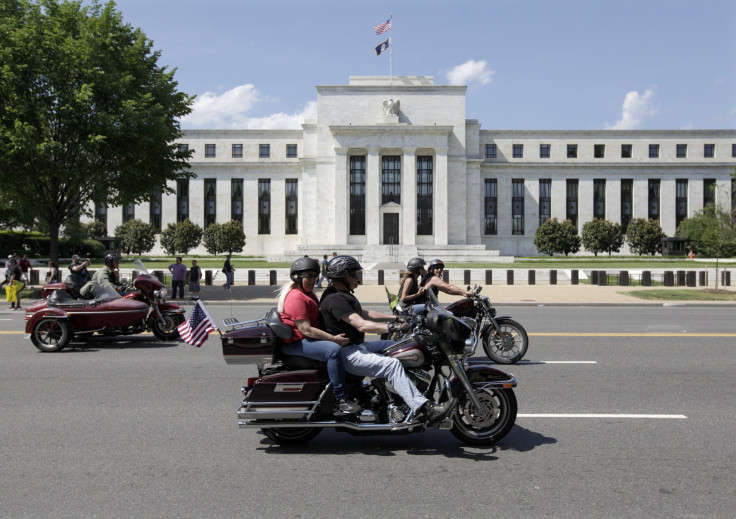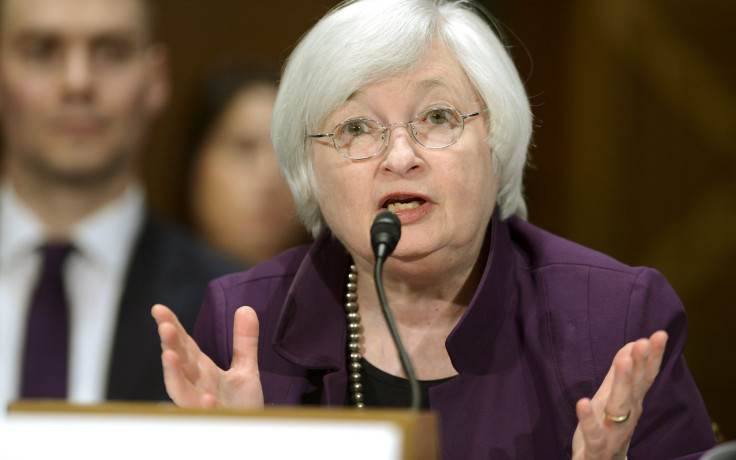Federal Reserve System: 3 Things To Watch From FOMC Meeting, Janet Yellen Speech

Prospects that the Federal Reserve will raise interest rates sharply divided analysts and economists Thursday while many financial markets hovered in a tight range ahead of the U.S. central bank's announcement of whether it will raise the cost of borrowing for the first time in nearly a decade. Fed Chair Janet Yellen laid the groundwork this summer for the Fed's first rate increase since 2006, saying the central bank is on course to raise this year if economic conditions evolve as expected.
Those remarks came in July during Yellen’s two-day semiannual Humphrey-Hawkins testimony before Congress. Since then, however, there have been major developments in global markets as stocks tumbled in August on fears that China’s economic slowdown would spread globally. The U.S. dollar appreciated sharply against global currencies and energy prices dropped further. All of these factors now complicate the Fed’s path to a 2015 rate hike.
The Fed has held rates at historic lows since December 2008 -- the height of the financial crisis -- primarily to boost the economy during the recession. If and when the rate hike comes, it will have broad effects on the U.S. economy and consumers, as windows of opportunity narrow on financial deals, including current low mortgage refinancing rates and zero percent financing on credit cards.

The Federal Open Market Committee (FOMC) is scheduled to release a statement outlining its decision Thursday at 2 p.m. EDT, followed by a press conference from Yellen at 2:30 p.m. EDT.
Here's what to watch for during the Fed's announcement.
1. The Fed’s Evolving Rhetoric
If the Fed is planning to raise rates soon, its statement has to evolve in Thursday’s announcement. If the Fed doesn’t raise rates this week, that leaves only two more meetings this year in October and December. The Fed could use Thursday’s press conference as an opportunity to prepare the financial markets for a rate hike at its meeting in October, but some economists say a rate hike announcement will likely occur in December rather than next month, since that meeting is accompanied with a press conference from Yellen.
The central bank has maintained it needs to have “confidence in the outlook” that inflation will return to the 2 percent target. That rhetoric could change Thursday.
Market professionals are evenly split about the prospects of a rate hike this week.
“It’s going to be a game-time decision,” Greg McBride, chief financial analyst at Bankrate.com, said. If the Fed wants to raise interest rates and not disrupt financial markets they have to do it at a time when everybody knows they’re going to raise rates, McBride explained. “Right now it’s a real toss-up,” he said.
But some experts are confident a rate hike will come Thursday.
"I think we get a rate hike ... and they will skip raising rates in December as they monitor the global economy. Then they'll revisit whether to hike rates again in the first quarter of next year," said Peter Cardillo, chief market economist at Rockwell Global Capital.
2. Fed’s Economic Projections Could Signal A Liftoff
Most markets believe the Fed will definitely hike rates in 2015, especially after Yellen's warning this summer that delaying action to tighten monetary policy until U.S. employment and inflation reach the central bank’s targets would risk overheating the economy. The Fed will release its updated projections for the U.S. economy over the next three years. Economists are likely to hone in on three key details: the unemployment rate, inflation and growth in the gross domestic product.
Experts say it would be appropriate for the central bank to hike minimally this year because it would remove uncertainty clouding the financial markets.
"The economic data does not warrant a near zero level for the fed funds rate," Tina Byles Williams, CEO and CIO at FIS Group, said. The U.S. unemployment rate was much higher following the financial crisis, hovering around 10 percent in 2009 but has declined to just over 5 percent this year, Byles Williams explained, "yet the Fed’s policy is still at the same level."
The Fed’s outlook for inflation has been dropping, according to the FOMC's June economic projections. Inflation is forecast to come in at 1.3 or 1.4 percent -- below previous forecasts -- but economists expect it to move closer toward the Fed’s 2 percent target over a multiyear period.
3. Dot Plots
Another key part of the FOMC's summary of economic projections to be released with the policy decision statement is the “dot plot,” which shows where each participant in the meeting expects the federal funds rate to be at the end of the year and includes data for the next few years as well.
A significant downturn in the committee’s dot plot could signal that the Fed may take an even more gradual approach to lifting rates than it has outlined in the past -- unlike the Fed committee from 2004 to 2006, which raised interest rates 17 consecutive times.
Policymakers signaled a less aggressive path for rates by lowering interest rate estimates for the end of the year following their meeting in March and then left the median projection unchanged at their June meeting for where interest rates will be at the end of the year at 0.625 percent. If the Fed does announce a rate increase Thursday, economists are looking for a hike of 25 basis points, or a quarter of a percent.
© Copyright IBTimes 2024. All rights reserved.




















